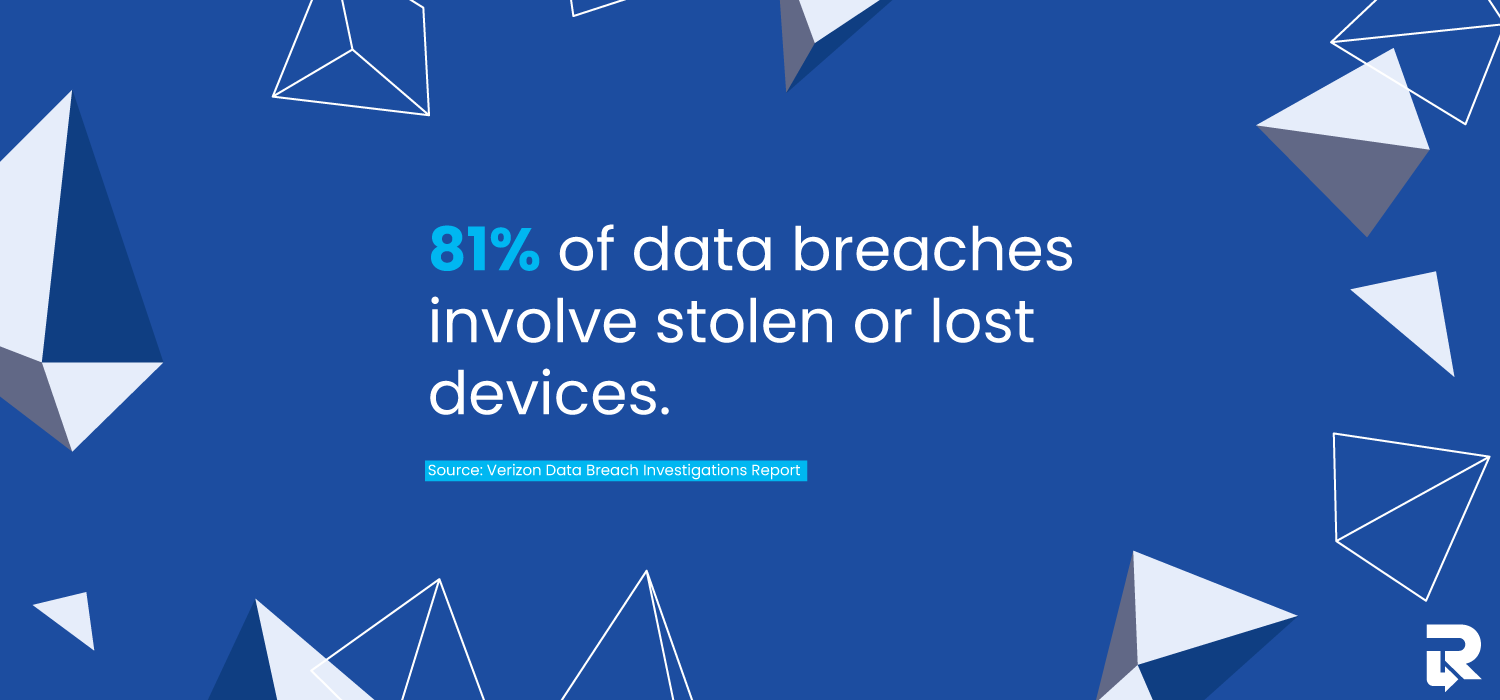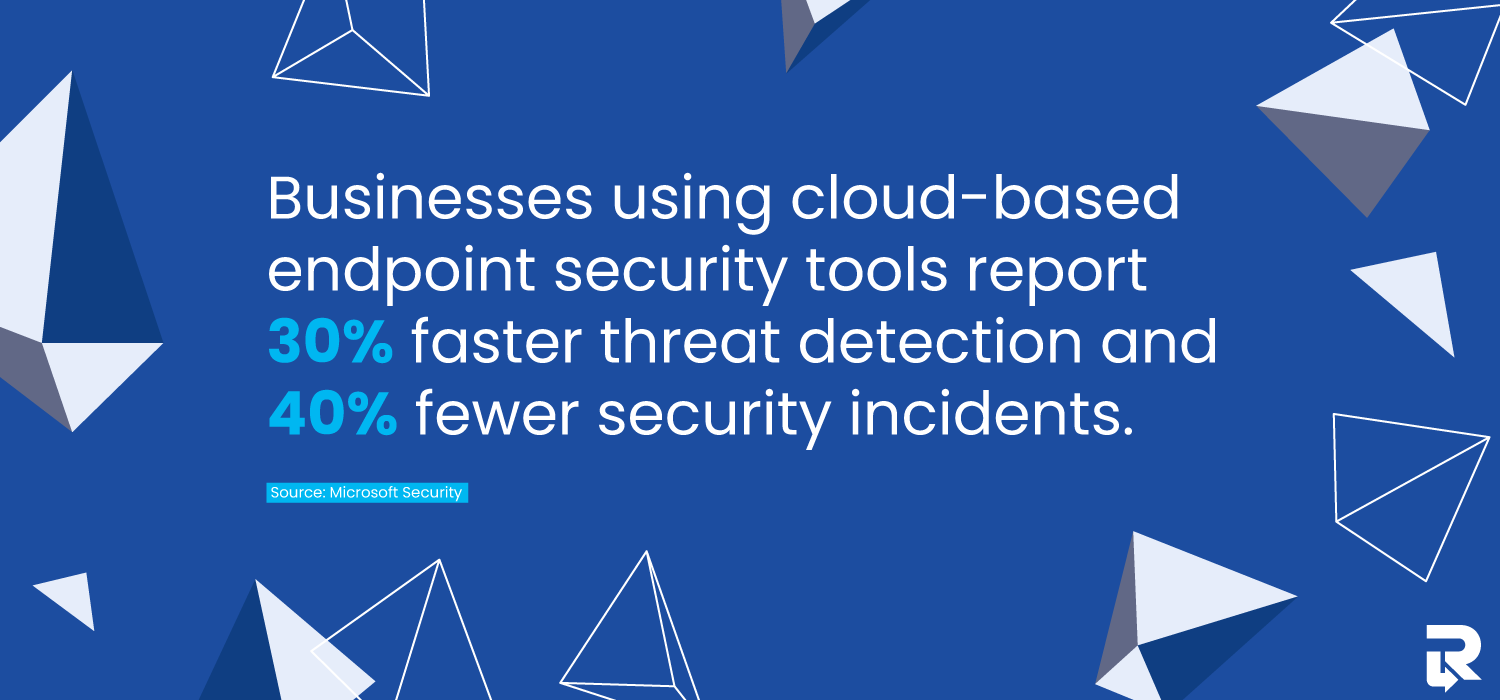There will be onboarding plans for new employees, but what about exiting employees?
In transitions where roles are changed and the employee leaves with or without notice, their unreturned laptops often slip through the cracks. At first, it seems like lost assets and nothing more. These laptops have sensitive files, logins, customer conversations, and a direct link to internal systems. Left unattended, that forgotten laptop can be a silent liability.

Lost devices. Massive risk.
These are no longer just about hardware costs; the importance of secure laptop return is significant and consequences can range from data leaks to compliance issues. And in all applicability, among growing hybrid and remote workforces, companies of all sizes have seen an uptick in security blind spots. Many of which are tied to missing or insecure equipment.
Whether you’re operating on a startup’s budget or a vast enterprise, business laptop security must be integrated into a broader IT strategy.
Recover Your Device Before It’s Too Late!
Here, we will delve into the effects of ignoring offboarding, explain why corporate laptop security is crucial, and how to fortify your defenses against a minor error that could lead to a massive breach.
Why Are Unreturned Laptops An Imminent Threat to Cybersecurity?
For most organizations, unreturned laptops pose a logistical issue. Truly, unreturned laptops have become a grave concern for protecting sensitive business data and security for corporate laptops.

iStock/courtneyk – Every unreturned laptop is a security gap.
Left behind in the possession of a former employee, each laptop becomes a backdoor to:
-
Company email
-
VPN and internal network access
-
Cloud-based software (Google Workspace, MS 365, etc.)
-
Customer data and company documents
That infernally harmless-looking little spreadsheet can morph into a liability. Thereby, with little control over where or how these devices are stored, the possible losing, stealing, or selling of the device creates considerable cybersecurity risk for the organization.
Real-World Consequences on Businesses
It becomes more dangerous when it is noticed that many data breaches do not happen in real time. For example, a hacked or forgotten laptop may take weeks or months before an unauthorized party accesses it. Meanwhile, damage would have occurred due to leaks of company secrets, infiltration into systems, and loss of trust from clients.

Image Source: iStock/studiostockart – When offboarding goes wrong…
For example, a mid-sized marketing firm failed to retrieve a developer’s laptop after resignation, and months later, detected suspicious access on project management software and client storage platforms. The company found that someone was still logged into several platforms after selling the device, but without the credentials being revoked or encryption enabled.
The incident later triggered an internal investigation, which resulted in surveillance of the clients followed by expensive remedial measures.
All of this would have been avoided by cybersecurity risk management.
These incidents highlight that, despite firewalls and antivirus safeguards, cybersecurity for businesses is still threatened. These are also assets ready for handling emergencies with human behavior as the other side of the whole spectrum. That’s why retrieval and data destruction of remote work equipment is so important.
Increased Vulnerability of Remote and Hybrid Workplaces
Increased complexity has been added to securing business laptops within the remote and hybrid workplace model. Devices often stay away from the company network for prolonged periods, making it a challenging exercise to monitor and update them with the latest security protocols. Any business operating without an endpoint management tool is essentially giving away every ounce of visibility and control over laptop use and where they are being used.

Hackers love easy targets. Don’t be one.
Also, small businesses are often very vulnerable because they lack an IT team. Therefore, they cannot bring their policies uniformly. This explains why cybersecurity for small businesses must include scalable cloud-based solutions for monitoring and securing endpoints. Without this, a laptop that doesn’t come back becomes an open invitation for cybercriminals.
Preventive Measures by Businesses for Their Own Protection
The alerting and cheering news is that you can keep your organization safe and avoid laptop return pitfalls without undue effort. The beginning point is visibility.
• Assets Tracking
The issuance of every employee’s laptop should be logged into a central asset management platform, tagging each computer by user, serial number, operating system, and last known activity. This digital trace gives one assurance of knowing what exists and what is overdue for return.
• Technical Control
Besides tracking, technical controls also help secure business laptops. The set of controls would include full-disk encryption, remote locking, and remote wiping mechanisms, all of which are managed through a password policy. If a computer is reported missing by an employee, administrators should have remote control to disable access and wipe sensitive data with a single command.
• Access Control
When an employee exits, IT and HR must work together to disable all logins, email accounts, VPN credentials, and cloud service access. A single missed account, no matter how obscure or rarely used, may give an attacker a backdoor into the most critical of systems. Automated offboarding tools should be able to alert HR to the created accounts, ensuring that no offboarding step is missed during the hustle of transition events.
• Strict Company Policy
Strict policy enforcement is equally essential to affecting corporate laptop security. Employees must be made aware from day one that any device must be returned immediately upon their exit. Having signed agreements as proof of this expectation, along with their negative ramifications in case of noncompliance, helps hold individuals accountable. These policies should be reiterated during exit interviews and enforced consistently across the board, irrespective of the employees’ rank.
Recover Your Device Before It’s Too Late!
Build a Long-Term Approach
Mitigating cybersecurity risks posed by lost devices is not a one-time solution, but rather an ongoing strategy. Companies should periodically conduct audits of their IT assets to compare current users with assigned hardware and flag any mismatches. This includes auditing for any active users without associated devices and for any devices with no active users.
Training on all these matters is equally important. Your employees should be familiar with secure usage techniques for their equipment, such as not storing passwords in browsers, avoiding public Wi-Fi without a VPN, and reporting any lost or stolen devices immediately. These small actions go a long way in supporting business data protection at the user level.
Smaller organizations should also assess affordable endpoint security and asset management tools tailored to address cybersecurity needs for small businesses.

Speed and safety? Go cloud.
Cloud-based platforms are especially beneficial, as they offer the same level of control without requiring an in-house IT team. Many of these solutions also include auto-lock, GPS tracking, patch management, and compliance reporting—essential features needed by any growing business.
Conclusion
Every employee needs to turn in their devices during offboarding. Laptops no longer pose merely an administrative inconvenience; they are a substantial security threat to a business. Sensitive data, system access, and client trust are all at stake. Thus, focusing on device retrieval during the employee offboarding process is essential.
From a team of ten to one that numbers a thousand, a robust device recovery policy is a strong pillar that should be cast across the broader cybersecurity risk management framework. With clear protocols, the right tools, and interdepartmental accountability, the risk to the company can be minimized for every laptop, whether it is returned or not.